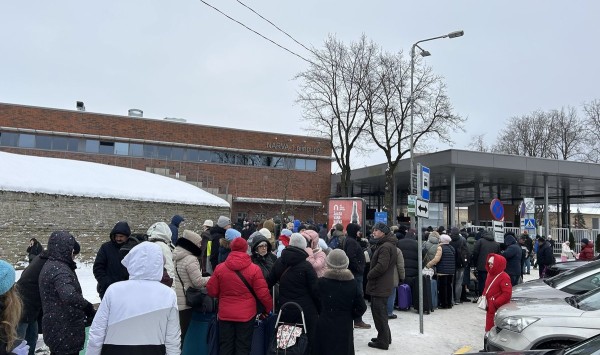Just a stone's throw west of the quaint hamlet of Udora is a charming little community known as Jõekääru (often pronounced joe-ka-roo in English), which in the language it originates from means “bend in the river.” A fun name, for sure, but some people prefer instead to call the place “The Compound.”
Along this Northern European-flavoured community's border you'll find streets emanating onto Ravenshoe Rd., Weirs Side Rd., and Old Shiloh with wonderfully strange and uncommon sounding names such has Harju, Viru, Männiku and Kalevi. If you ever find yourself hanging around the Udora General Store you might even overhear someone casually say into their cellphone — “Yeah, I'm staying at Naelapea's just north of Vambola, off Kalevi on Lembitu” — you'll know they're from Jõekääru
All these names have significance for Estonian people. Estonia is a small country that abuts Russia, Latvia and the Baltic Sea. Following the Second World War and the Soviet occupation of their country, newly arrived Estonians were extremely anxious to do anything and everything to preserve their culture and further the cause of freedom for their opressed friends and relatives back home. An enterprising group of these immigrants discovered Udora in 1953 and cobbled together enough money to purchase a 400 acre farm with the goal of creating a children's summer camp and a cottager's paradise. This was meant to be a private area, where Estonians could gather, speak their language, party hardy and enjoy the wilds of Canada.
The project was a huge success. Estonians came from all over Ontario, Canada and the United States to buy land, build cottages and enroll their children in the camp. About 160 freehold lots were created, each roughly an acre in size. The camp took ownership of 57 acres and about 200 acres of forest, streams and fields were left for the most part untouched, to be enjoyed and managed jointly by the cottagers and the children's camp. A trim and vigorous bunch, they also built an outdoor track and field stadium, that many (an Estonian) claim was one of the best sport venues in Ontario way back in the 50s and early 60s. The Pefferlaw Brook, which runs through Jõekääru, was dammed and a recreational and competitive swimming area was also developed. The dam is still operational, but the water is now a dark morass brimming with a thick unsavoury silt.
In the beginning, two organizations were created, one to care for the children's camp and the other to manage the roads together with the street signage, ditches, fields, forests and streams on behalf of the cottagers. The property owners group was named the Estonian Summer Homes Assocation. An important mandate of the Association was to keep the area in the hands of Estonians. When a property came up for sale, and if it happened that there were no Estonian buyers, then the Association would make the purchase and wait for the “right” person to come along. Things worked well, for a while. That was when (in the good old days) properties could be traded for a thousand or two dollars. But land values began to escalate in the 1970s to a point where the Association did not have the financial ability to maintain the status quo. Slowly properties began to change hands to non-Estonians. It was not until sometime in the 1980s that it became noticeable the area was undergoing an important transformation. Exclusive summer cottage country was turning into a place where people were raising a family and living year round. Today about 50 to 60 properties in Jõekääru are permanent year-round residences, of which about half are occupied by non-Estonians.
The changes to the demographics of Jõekääru in the last 25 years have been significant. Admittedly, at first there was a certain amount of social friction with the newcomers, but the community seems to have matured and is now in a situation where it is rediscovering its “new” self. A friendly congeniality pervades the place today. You can't walk the gravel streets of Jõeääaru today without someone saying hello in either English or Estonian, or have a driver pass by without giving a friendly wave. Every year there are one of two community work days, and the current participation levels reflect a strong local spirit that had been waning for decades. The Association collects an annual membership fee of $75 ($100 starting in January). While it still conducts all its official business in Estonian, the Association recognizes changes are in order and is now, very slowly, preparing a new updated property owners constitution to better reflect current cultural realities.
Estonian compound in Udora evolves to reflect new cultural reality
Archived Articles | 30 Sep 2005 | Erik TannerEWR
Archived Articles
TRENDING


















